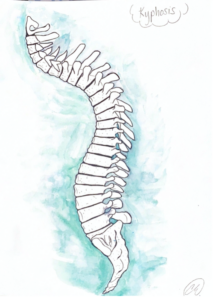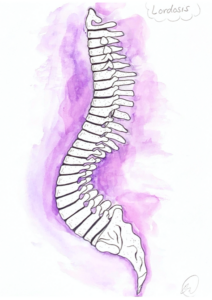For my STEAM project, I drew the spine and what kyphosis and lordosis looks like. I focused on a brief description of both types of spine curvatures, the different types, and the treatments that are available.



For my STEAM project, I drew the spine and what kyphosis and lordosis looks like. I focused on a brief description of both types of spine curvatures, the different types, and the treatments that are available.


I was paired with Elise Wood for the STEAM project. Both of our projects were on the human spine, which I think is why we got partnered. Elise made her project on kyphosis and lordosis. The steam project explained how important spine curvature is and how kyphosis and lordosis affect a person.
Elise explained that when a person has kyphosis it means that their thoracic spine is rounded. People who have kyphosis look like they have hunched their back. In this presentation, there is three forms of kyphosis: post-traumatic, age-associated, and Scheuermann’s disease. Post-traumatic kyphosis occurs around the mid to lower back after traumatic injuries. The symptoms can be muscle fatigue, swelling, pinched nerves, and trouble with sitting balance. Age-associated hyperkyphosis is usually found in adults. Age-associated hyperkyphosis can make it difficult to move around and the symptoms can be pain, stiffness, reduced height, and struggle to perform daily activities. Scheuermann’s Kyphosis is usually found in adolescence and can develop more into adulthood. Symptoms include poor posture and pain. Kyphosis can be treated by physical therapy, medications, back braces, daily exercise, surgery, NSAIDs, and spinal fusion.
Afterward, Elise explained lordosis and how it is different from kyphosis. Lordosis is a curve in the lumbar area of the spine. This curvature will cause the stomach to bulge out and the hips to curve back. Elise explained that there are five types of lordosis and the main causes are bad posture, genetics, injury, illnesses, or surgery. The five types are Postural Lordosis, Congenital Lordosis, Post-Surgical Laminectomy Hyperlordosis, Neuromuscular Lordosis, and Lordosis Secondary to Hip Flexion Contracture. Elise did a great job on her STEAM project by explaining kyphosis and lordosis and she also created two amazing drawings illustrating each. Her project was well structured and gave me a clear picture of how the spine can be affected by kyphosis and lordosis.